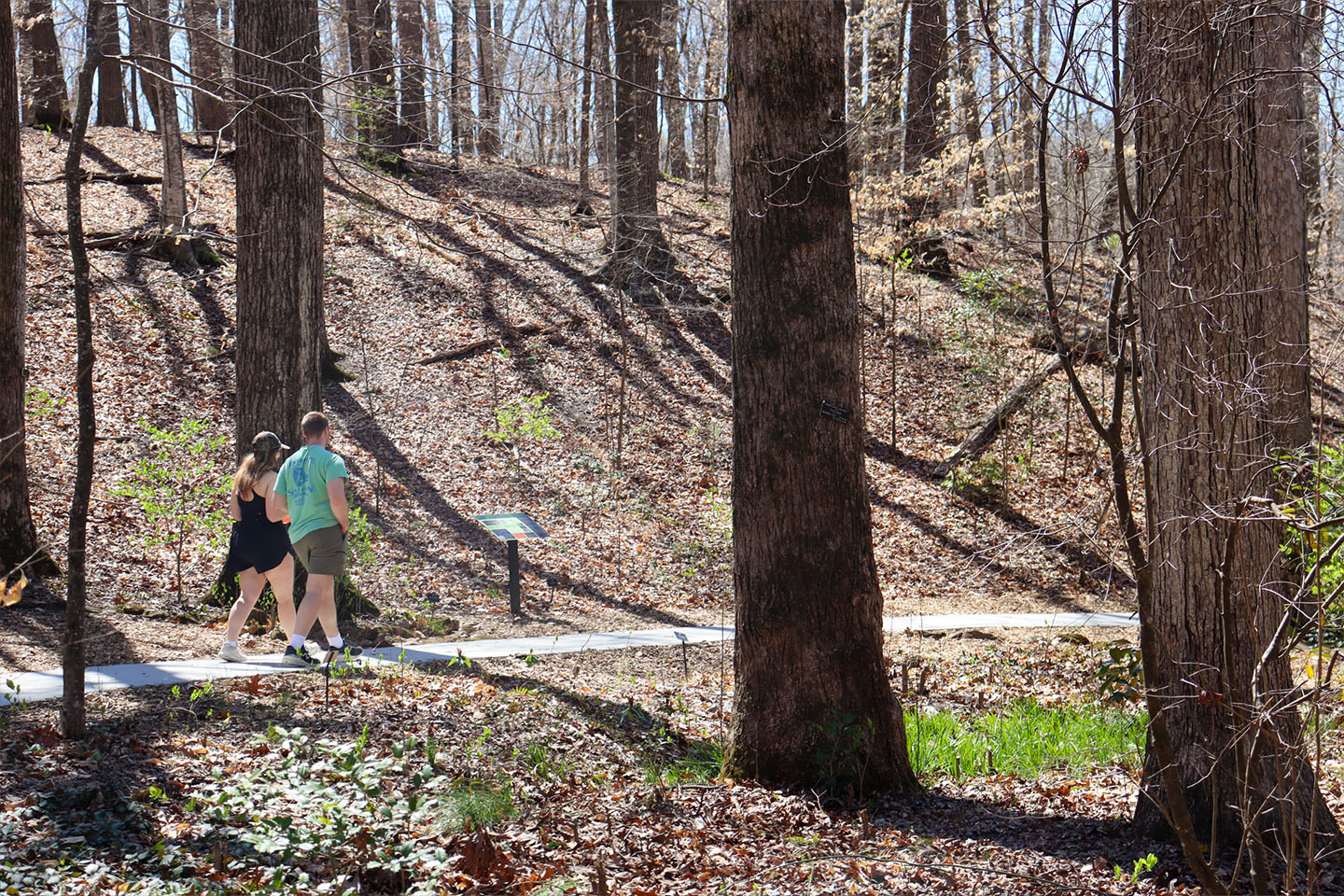A rare species of firefly has recently been discovered at the State Botanical Garden of Georgia at the University of Georgia. The Loopy Five, named for its looping flight pattern, has been spotted in high concentration in the wetlands boardwalk area on the garden’s orange trail.
The firefly, petitioned to be on the Endangered Species List, was first spotted by a community scientist involved with the Firefly Atlas outside his home in Monroe, according to Anna Yellin, a wildlife biologist with the Georgia Department of Natural Resources. Georgia DNR investigated and found more Loopy Five populations in the surrounding Athens area.
“It’s exciting to find such a rare firefly in this area. It shows we still have opportunities to discover and conserve native species within our communities, even in areas surrounded by development,” said Yellin.
The Loopy Five firefly has been spotted in a handful of locations in Georgia, South Carolina and Tennessee, but there’s not much documentation on this species, according to the Firefly Atlas.

The search for the Loopy Five and the partnership between Georgia DNR and the State Botanical Garden led biologists to identify the garden as a potential location for the fireflies. The garden’s wetlands boardwalk area contains what biologists suspect are the right conditions for these fireflies to thrive, and on a visit to the garden, DNR biologists found many Loopy 5 fireflies.
“It’s a great site that can be accessed without disturbing vegetation,” said Yellin. “There’s been such a decline in wetlands that places like this are not as common as they once were.”
The State Botanical Garden of Georgia has over 290 acres of natural areas that garden staff work to preserve as an example of stewardship of Georgia’s natural Piedmont habitats. In recent years, the garden has received funding from the federal Recreational Trails Program, which Georgia DNR administers in the state, and the Riverview Foundation to renovate and widen sections of the garden’s trails, build an accessible boardwalk and install adjacent ADA-accessible parking spots.
“Identifying the Loopy Five at the State Botanical Garden demonstrates how important it is to preserve native ecosystems,” said the garden’s director, Jenny Cruse-Sanders. “We are proud to be a partner with Georgia DNR, and a prime location for scientists to research native species of all kinds.”

The Loopy Five can be identified by a series of light blinks, usually four, followed by a loop of motion on the fifth blink, thus giving the species its name. Yellin says that this unique pattern makes them easier for non-firefly experts to identify.
In addition to being rare, the Loopy Fives are important to identify because they, along with other nocturnal species, are significant pollinators. The garden’s Connect to Protect and Georgia Pollinator Plants of the Year programs educate Georgians about the crucial need for pollinators and how they can make a difference for pollinator conservation in their backyards.
Yellin urges Georgians to participate in community science programs like the Firefly Atlas and Southeast Bumble Bee Atlas. Both programs can be accessed through DNR’s Biodiversity Portal, which has links to these programs and more: https://georgiabiodiversity.org/portal/invertebrate_volunteer.

When asked about the partnership between the State Botanical Garden and Georgia DNR, Yellin said, “We have the same priorities with native wildlife. Plants are fundamental to the invertebrates, and the invertebrates are fundamental to plants, so there’s that continuous network.”
If you are interested in learning more about pollinators and insects, join garden staff and partners for the 35th annual Insectival on Sept. 28. For more information about Insectival and the State Botanical Garden’s pollinator programs, visit botgarden.uga.edu.




